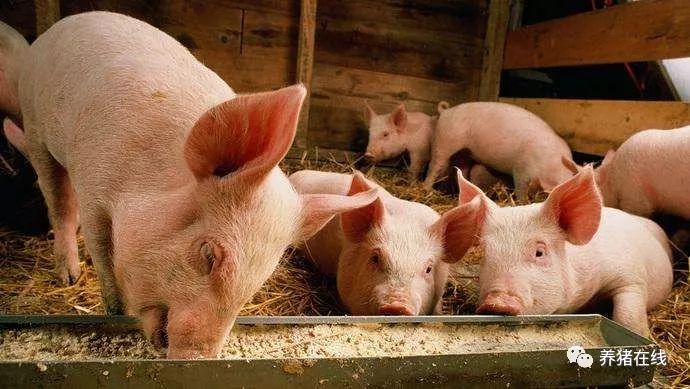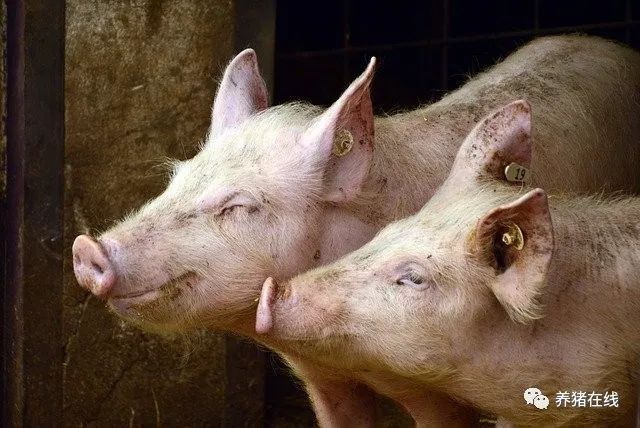How to solve the flatulence of sows? Causes of flatulence and its prevention and treatment
As we all know, summer is a high incidence period for diseases in many pig farms, and flatulence in sows is one of the more serious hazards. Flatulence of sows, also known as "sudden death syndrome of sows", the mortality rate of this disease is very high, and pigs at different stages can develop the disease.

The disease has urgent onset and short course of disease. The main symptom is the sudden bloating of diseased pigs, so they often miss the best time for treatment.
So why do sows have flatulence? How to prevent and cure it? Next, let's learn about it together.
1. The cause of flatulence in sows
1. Gastrointestinal tract:
On the one hand, intestinal disorders caused by stimulation, such as: cold water, moldy feed are easy to cause digestive disorders in pigs, leading to flatulence.
On the other hand, when sows eat too much dry food and lack of drinking water, and when stomach peristalsis is insufficient, anaerobic bacteria multiply rapidly, producing a large number of harmful gases, causing gastrointestinal flatulence, oppressing the heart and lungs, resulting in blood circulation disorders, resulting in asphyxiation and death of sick pigs.
2. Clostridium perfringens:
It is mainly caused by Clostridium welchii type An and D and type C bacteria that cause red dysentery in piglets.
When there is a mutation in feed, climate and environment, it leads to the decrease of pig resistance and the imbalance of intestinal flora, which is caused by the mass reproduction of Clostridium welchii in the intestine.
3. Intestinal torsion:
Gastroenteritis or colitis, peritonitis, intestinal flora imbalance caused by improper diet, hypokalemia caused by water and electrolyte retention, vitamin B1 deficiency, mechanical intestinal obstruction, etc., lead to gastrointestinal dysfunction and gastric volvulus.
Second, clinical manifestations of flatulence in sows.
Clinical changes of Clostridium perfringens:
From the appearance, it shows that the whole body is pale, the mouth is open, the mouth and nose flow out of red or white foam, the abdomen is extremely dilated, and the anus is extroverted.
Mild patients, do not eat at the beginning of the disease, often vomiting, black defecation, appearance like cow dung, inner view dark red, severe cases turn to sauce color.
Individual anus discharge more than a foot long chorionic necrosis, bleeding is more serious, the abdomen will gradually increase, mouth opening, salivation or foam, and the spirit is low and restless, the body temperature is slightly higher or normal, the skin gradually whitens.
If not timely treatment, the performance of dyspnea, ataxia, mania, extreme abdominal expansion, skin cyanosis failure death, postmortem skin pale, mouth and nose bleeding watery foam.
Anatomical changes of intestinal volvulus:
It can be seen that the gastrointestinal tract is inflated, the stomach is twisted or dilated, the gastric mucosa shows severe hemorrhagic inflammation, and gastric ulcers can be seen in some cases.
Mesenteric congestion and catarrhal inflammation of the small intestine
The heart, liver, lung, kidney and lymph nodes are basically normal.
The spleen was displaced and enlarged several times.
Gastric volvulus is a characteristic lesion of the disease.
Treatment of flatulence in sows
1. Flatulence caused by indigestion
(1) artificial salt, yeast tablets, baking soda or some microecological agents were added to the feed.
(2) Carbamylcholine chloride was injected intramuscularly to regulate gastrointestinal tract.
(3) from the aspect of management, it is necessary to increase the exercise of sows, increase drinking water and other measures.
2. Flatulence caused by Clostridium perfringens
Principle: outgassing, antifoaming, relieving the bowels, strengthening the heart and replenishing fluid.
(1) Oral dimethyl silicon oil tablets, 50~75mg three times a day, to eliminate the foam in the gastrointestinal tract, while taking medical carbon tablets to enhance the rate of exhaust, in order to achieve the purpose of relieving the surface.
(2) the pigs were intramuscularly injected with ceftiofur sodium 30mg/kg and vitamin C 10ml + vitamin B10ml twice a day.
(3) the unaffected group was fed with 70% amoxicillin 400g, 10% doxycycline 2000g, electrolytic multidimensional 500g, glucose powder 2000g 1t for 7 days.
3. Flatulence caused by intestinal volvulus
The main results are as follows: (1) the feeding and management of piglets should be strengthened, and mild intussusception may recover spontaneously without irritating feed, and severe intussusception often dies within a few hours.
(2) chronic intestinal wall necrosis is often associated with poor prognosis. It is hopeful to be cured by surgical reconstruction after early diagnosis.
4. Preventive measures for flatulence in sows
1. Pregnant and lactating sows should be strictly divided into different periods, separate meals and quantitative feeding to prevent indigestion caused by overeating.
2. The pig house should do a good job in cleaning, hygiene and feed storage to prevent mildew.
3. Properly raise the temperature of the pregnancy house in winter to avoid the stimulation of drinking water and feed mildew to the gastrointestinal tract of sows, so as to avoid flatulence.
4. Strengthen exercise and feed more green feed to promote gastrointestinal peristalsis and reduce the growth of anaerobes.
5. Add vitamins and probiotics to improve gastrointestinal digestion and anti-stress ability.
6. In winter and spring or when the temperature changes frequently, add metronidazole 1000-2500g/ tons to the pig feed for 7 days, and amoxicillin + doxycycline seasonal prevention.
These are the reasons for the flatulence of sows and the preventive methods. In the process of raising pigs, we must match the feed reasonably, provide them with clean and adequate drinking water, appropriately enhance the exercise of sows, and add some vitamins and probiotics to the feed to maintain the health of the digestive system of sows.
Related
- On the eggshell is a badge full of pride. British Poultry Egg Market and Consumer observation
- British study: 72% of Britons are willing to buy native eggs raised by insects
- Guidelines for friendly egg production revised the increase of space in chicken sheds can not be forced to change feathers and lay eggs.
- Risk of delay in customs clearance Australia suspends lobster exports to China
- Pig semen-the Vector of virus Transmission (4)
- Pig semen-the Vector of virus Transmission (3)
- Five common causes of difficult control of classical swine fever in clinic and their countermeasures
- Foot-and-mouth disease is the most effective way to prevent it!
- PED is the number one killer of piglets and has to be guarded against in autumn and winter.
- What is "yellow fat pig"? Have you ever heard the pig collector talk about "yellow fat pig"?



